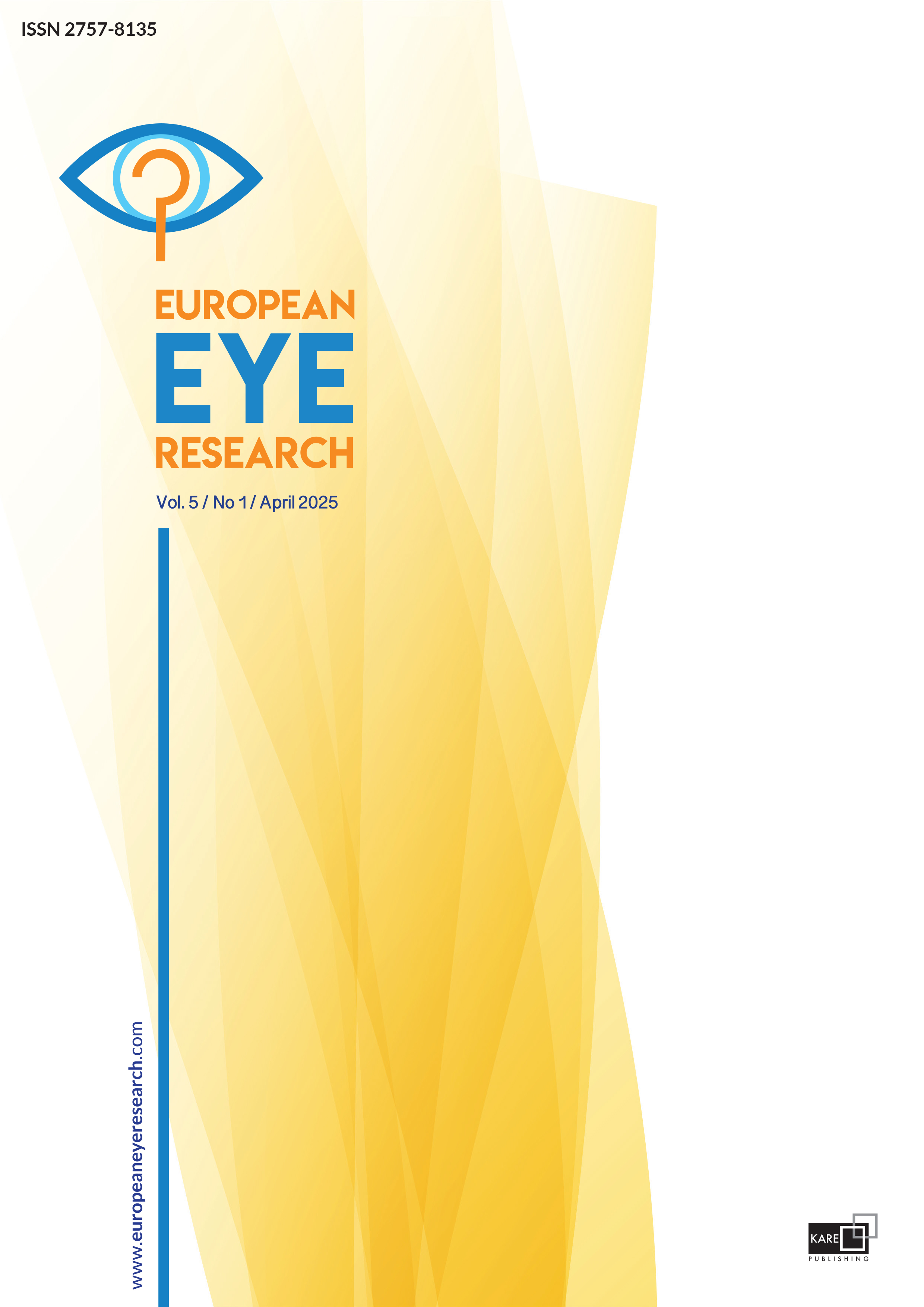

Investigation of Dry Eye Parameters in Patients with Age-Related Macular Degeneration Undergoing Repeated Intravitreal Injections
Bedia Kesimal, Sucattin Ilker Kocamis, Merve Karakaya, Aysun Sanal Dogan, Osman CelikayDışkapı Yıldırım Beyazıt Training And Research Hospital, Department Of Ophthalmology, Ankara, TurkeyPURPOSE: This study aims to investigate the effects of repeated intravitreal injections on dry eye parameters in patients with age-related macular degeneration (AMD).
METHODS: The study evaluated 139 eyes of 139 naive patients with neovascular AMD (nAMD) who received at least three intravitreal injections having normal break time and no fluorescein staining before the injections (Group 1) and 80 healthy control eyes of 80 individuals (Group 2). Patients with systemic conditions contributing to dry eye, fewer than three injections, history of ocular surgery, pre-existing dry eye disease, or autoimmune diseases were excluded. Ophthalmological examinations were conducted one month after the last injection, assessing meibomian gland loss, non-invasive tear break-up time, and corneal epithelial mapping,and compared with the control group. Data were analyzed using Jamovi statistical software, with a p-value of <0.05 considered significant.
RESULTS: Group 1 (139 patients, mean age 68.3±8.58 years) showed significant differences in lower eyelid meibomian gland atrophy, non-invasive tear break-up time, and corneal epithelial thickness in the lower, lower-nasal, and lower-temporal regions compared to Group 2 (81 individuals, mean age 67.3±4.92 years). Correlation analysis revealed statistically significant relationships between the total number of injections and the percentage of atrophy of the lower eyelid meibomian glands (p<0.001), non-invasive tear break-up time (p<0.001), and corneal epithelial thickness in the lower or thinner (p=0.01) and lower or thinner-nasal regions (p=0.04).
CONCLUSION: Repeated intravitreal injections in patients with nAMD are associated with significant atrophy of the lower eyelid meibomian glands, reduced non-invasive tear break-up time, and thinner lower corneal epithelial thickness, suggesting a potential contribution to dry eye development. Clinicians should consider these findings to optimize treatment protocols and implement preventive measures to enhance ocular health in patients undergoing intravitreal therapy for AMD.
Manuscript Language: English



